The Lovebird belongs to a group of small parrots in the taxonomic genus Agapornis. There are nine different species of these birds, all of which live in Africa or Madagascar. These birds are also common pets, though not as popular as budgies.
The three species that people usually keep as pets are the peach-faced, Fischer’s, and yellow-collared Lovebird. Read on to learn about the Lovebird.
Description of the Lovebird
Each species of these birds is slightly different in appearance, but their shapes and sizes are similar. They are small parrots, with rounded heads and relatively large beaks.
All of the different species are green, though some have orange, yellow, gray, black, or red on their heads and necks. Most Lovebirds are five or six inches long, and weigh about two ounces.
Interesting Facts About the Lovebird
This bird’s name comes from its long-lasting monogamous pairings. Learn what else makes them unique and interesting below.
- Agapornis – The genus name of this group of birds literally translates to “Lovebird.” The genus name comes from the Greek words “agape” and “ornis,” or “love” and “bird” respectively.
- What’s in a Name – They aren’t called Lovebirds for nothing! These parrots are monogamous, and bond with their mate for their entire lifespan. To establish pair bonds, they feed one another small pieces of food. Usually, the male is the one that feeds the female.
- Love Around the World – Like many pets, sometimes people accidentally (or purposefully) introduce these birds into the wild outside of their natural range. These introduced flocks, known as feral populations, live in Arizona, Texas, California, Australia, and more.
Habitat of the Lovebird
Different Lovebird species inhabit different ecosystems. Some species live in similar habitats, while others live in drastically different areas. Nearby water sources are important, and usually a feature of any species’ preferred habitat.
Some of the different types of habitats these birds live in include woodlands, forests, desert edges, scrub forest, savanna, and more. Some species live close to human habitations and cities, including farms, parks, and gardens.
Distribution of the Lovebird
These birds live across Africa, and one species lives in Madagascar. The range of each bird is different, and some species live across larger areas, while others live in a restricted location.
The populations of some species do overlap with those of other species on occasion. Some of the different regions of Africa that they live in include Tanzania, Malawi, Zambia, Botswana, South Africa, Namibia, Ethiopia, and more.
Diet of the Lovebird
Lovebirds are herbivores, which means that they only eat plants. They eat a variety of different foods, including seeds, fruits, berries, and more. Most of their foraging occurs on the ground, particularly for those species that feed more heavily on seeds.
Some species have pickier diets, and feed on only a few different types of food. Other species are generalists, and eat just about any type of fruit, berry, or seed.
Lovebird and Human Interaction
Like budgies, Lovebird flocks sometimes feed on agricultural crops. This leads to conflicts with farmers, but the extent of this damage varies from case to case. Human impact on these birds varies from species to species.
Some of the primary dangers to these birds are habitat destruction and capture for the pet trade. The IUCN lists the black-cheeked Lovebird as Vulnerable, the Nyasa and Fischer’s Lovebird as Near Threatened, and the rest as Least Concern.
Domestication
Humans have semi-domesticated these birds. We have selectively bred the few species that we keep as pets for hundreds of years.
Does the Lovebird Make a Good Pet
Yes, Lovebirds do make good pets. The only ones you should keep as pets, however, are the birds that humans breed in captivity. Wild animals never make good pets, and can carry diseases that could injure or kill other birds.
Lovebird Care
It is important to provide plenty of space for your Lovebirds to fly and exercise. All of them are social, and unless you plan on spending hours with your bird every single day, you should buy two birds.
You can feed your birds commercially prepared seed, and supplement their diet with a variety of fruits and berries. It is important that you carefully and gently handle your birds and hand feed them to properly socialize them, so they do not bite.
Behavior of the Lovebird
As their name might suggest, Lovebirds are affectionate and social birds. They live in groups known as flocks. Flocks of these birds preen each other and vocalize in the morning, before moving off as a group to forage.
Different species feed on different food sources, and some forage on the ground while others search for fruit in the trees. Sometimes, when food is especially plentiful, multiple flocks congregate in the same area.
Reproduction of the Lovebird
These birds are monogamous, and continue to mate with the same partner for life. Their courtship behavior varies from species to species. Some feed one another to strengthen their bonds, while others sing or dance.
Most clutches contain five or six eggs, which the female incubates for about three weeks. It takes around a month for the chicks to fledge. The young gain their independence shortly after they begin to fly.

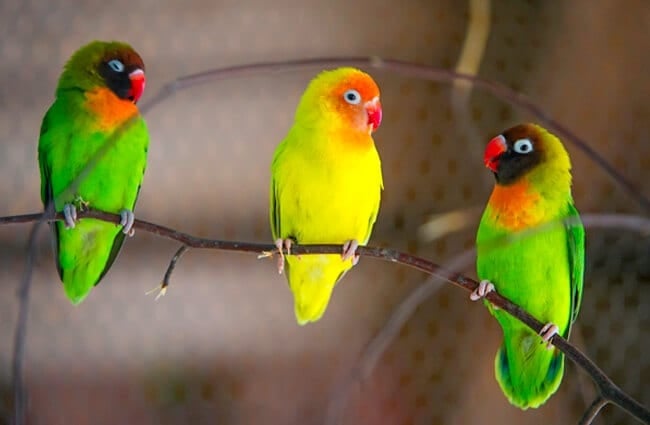
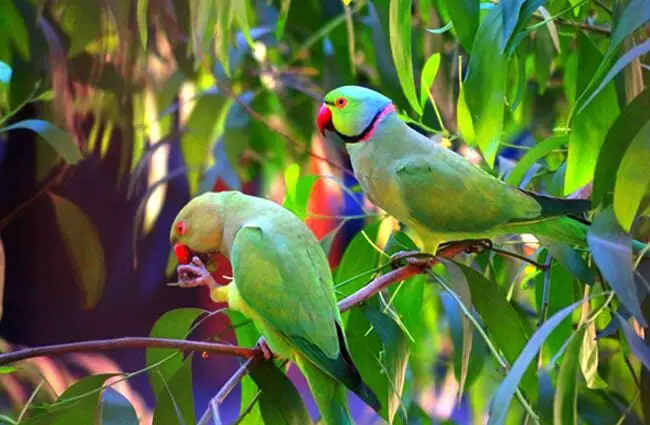

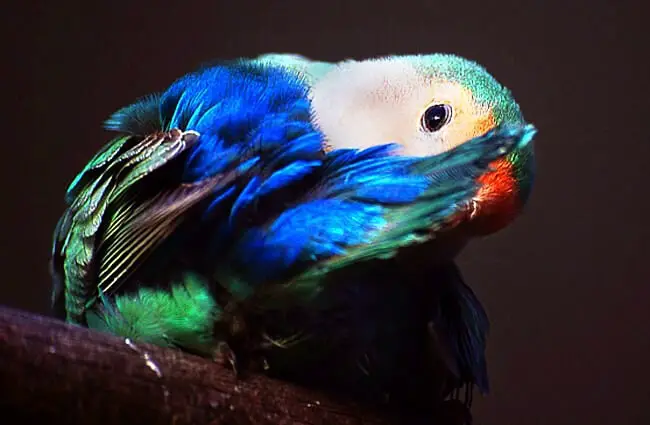






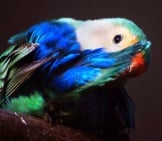

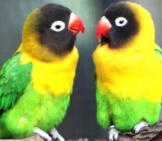

![Red Angus Closeup of a beautiful Red Angus cowPhoto by: U.S. Department of Agriculture [pubic domain]https://creativecommons.org/licenses/by/2.0/](https://animals.net/wp-content/uploads/2020/03/Red-Angus-4-238x178.jpg)












![Red Angus Closeup of a beautiful Red Angus cowPhoto by: U.S. Department of Agriculture [pubic domain]https://creativecommons.org/licenses/by/2.0/](https://animals.net/wp-content/uploads/2020/03/Red-Angus-4-100x75.jpg)

